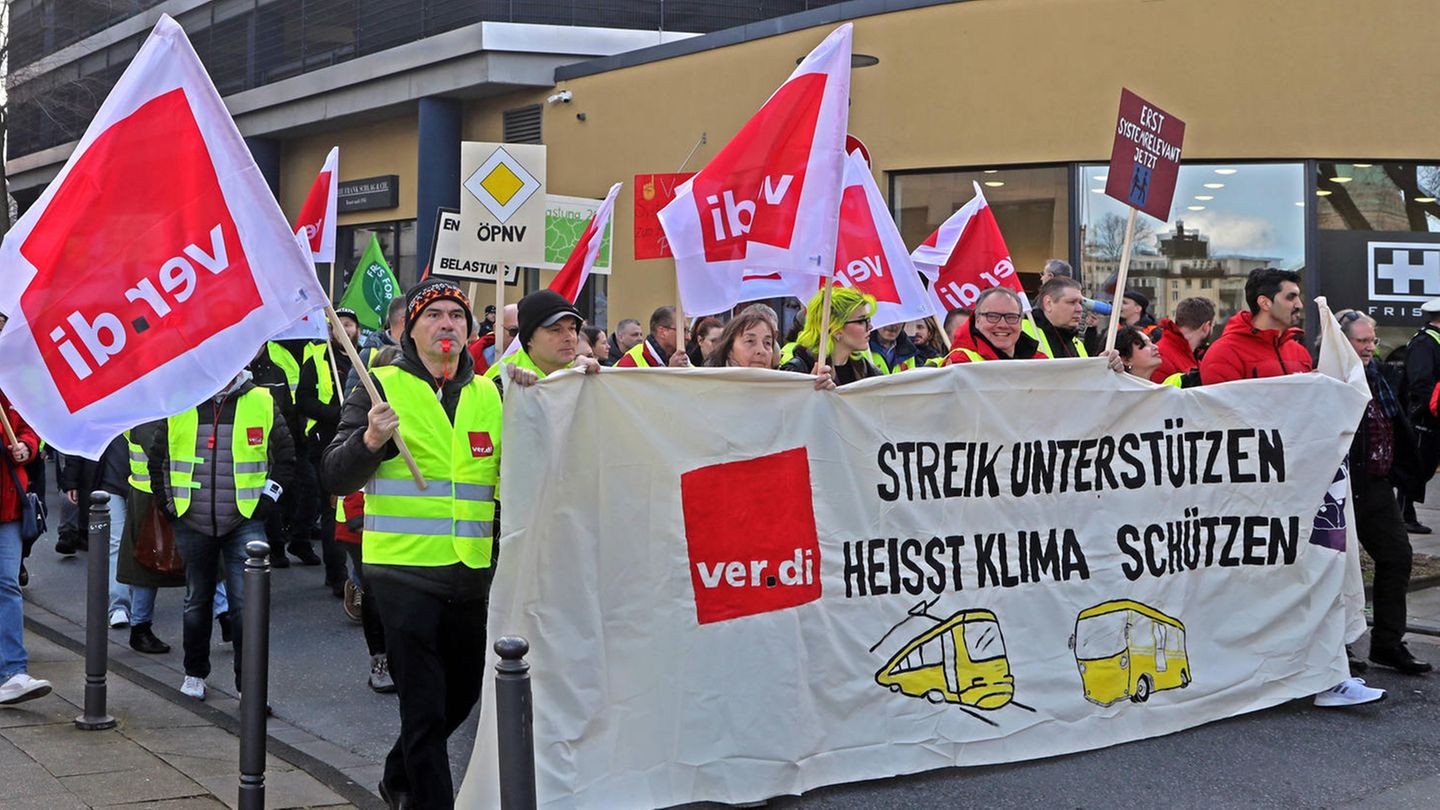Planes on the ground, trains on the sidings – many employees are currently on strike. Experts say that collective bargaining conflicts are becoming more intense than before. But also: It gets even harder.
More and more strikes on the railways, warning strikes in air transport – and now both at the same time: People on the move in particular are feeling how collective bargaining conflicts are currently escalating. There are also warning strikes in local transport, and the road is sometimes blocked by protesting farmers who are also fighting for their income. In many places it is about how wealth is distributed, and the mood is sometimes testy. Are strikes in Germany now harder than they used to be?
Yes, says Hagen Lesch, the tariff expert at the German Economic Institute (IW) in Cologne. “The collective bargaining disputes last year were tougher than in previous years,” Lesch told the DPA news agency. The employer-related institute has been measuring the extent of collective bargaining conflicts in selected industries since 2010 using a points system. “Since 2010 we have not had a conflict level as high as last year.” There is still no evaluation for the first quarter of 2024. “But there are indications that we will maintain a similarly high level in the current year as we had last year.”
Prices rose faster than salaries
One reason is the high inflation in recent years. At times, prices rose faster than salaries. According to the Federal Statistical Office, last year saw the first small increase in real wages since 2019 – an increase of 0.1 percent, although one-off inflation compensation bonuses also contributed to this. The unions went on the offensive to regain purchasing power, says Lesch.
On the other hand, there is a weak economy. Last year, Germany as a whole already slipped into recession with a decline in economic output of 0.3 percent. Economists expect the weakness to continue for the time being.
Labor disputes
114, 117, 449 days: The longest and largest strikes in Germany
This reduces employers’ willingness to make concessions, said IW expert Lesch. “So we have aggressive unions in an environment where companies tend to tighten their spending pants a little.” It is naturally more difficult to reach compromises. In addition, certain unions wanted to gain members through active collective bargaining movements and have already been successful in some cases. “In this respect, one has to fear that other unions that have previously been more peaceful will also want to try it out.”
Social scientist Irene Dingeldey from the Institute for Work and Economics at the University of Bremen emphasizes that the strikes are far from having taken on their harshest form. “These would be indefinite strikes and we don’t have them yet,” said the social scientist at the DPA. But of course there is a certain increase in strikes, especially in the transport sector. “We notice them more because we feel the effects. And that’s why they may seem harder to us.” However, if there is a strike in the metal industry, for example, this does not directly affect the average citizen.
“Strike is a legitimate instrument of collective bargaining”
“Strike is a legitimate instrument of collective bargaining,” said Dingeldey. It is the only form of resistance that workers have to emphasize their demands. “That’s part of it – whether we like it or not.”
Trade unions are currently showing a certain vehemence. In the background is the current labor shortage. For the unions, this means a “power resource”. “If the commodity labor becomes scarce, then a higher price is charged.” When unemployment is high, however, unions lose power: “Then wage demands are lower.”
It is unclear which sectors will still be on strike this year. According to the collective bargaining archive of the Economic and Social Sciences Institute (WSI) of the trade union-affiliated Hans Böckler Foundation, collective remuneration agreements agreed by the DGB unions alone will expire between December 2023 and December 2024 for almost twelve million employees. Collective bargaining will begin in September in the metal and electrical industry, the largest collective bargaining industry with over 3.6 million employees. The collective agreements for the federal and local public services (2.4 million employees) expire at the end of 2024.
IW expert Lesch still assumes that the upcoming collective bargaining disputes this year will have less impact than the current conflicts in the aviation and rail sectors. “Once the major conflicts with the airlines, aviation security and the railways are over, we will no longer notice it as much as we do at the moment.” However, there can always be surprises.
Source: Stern




